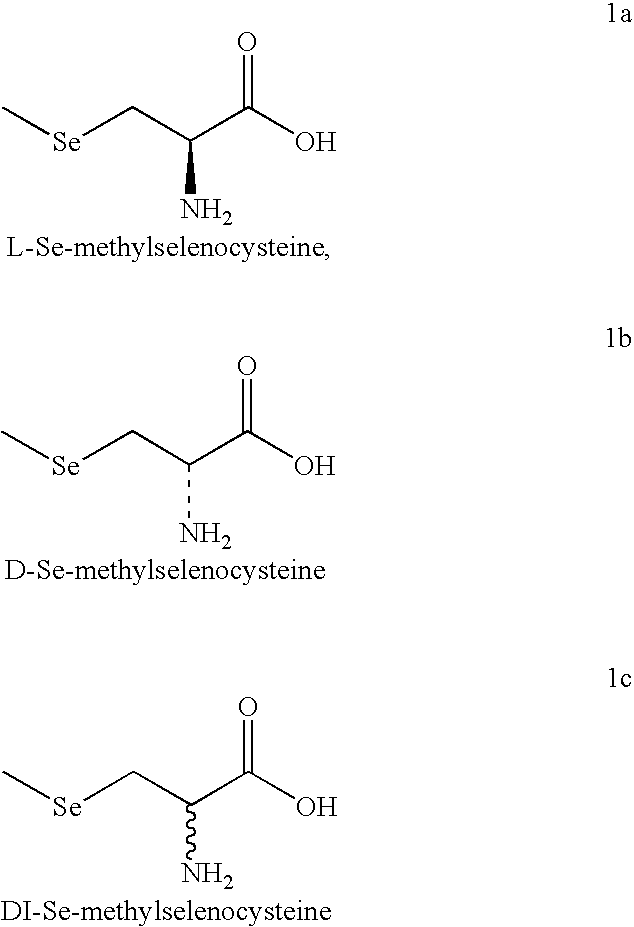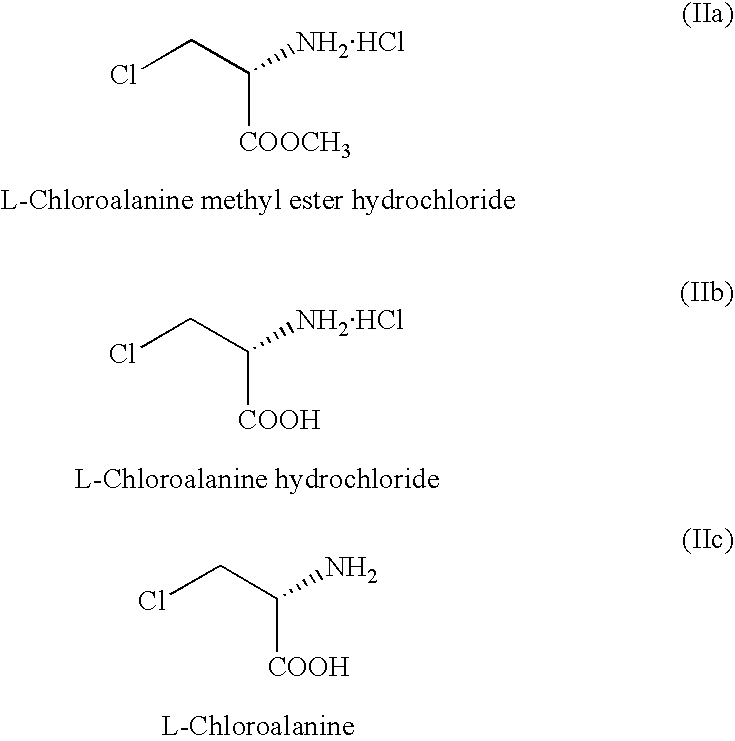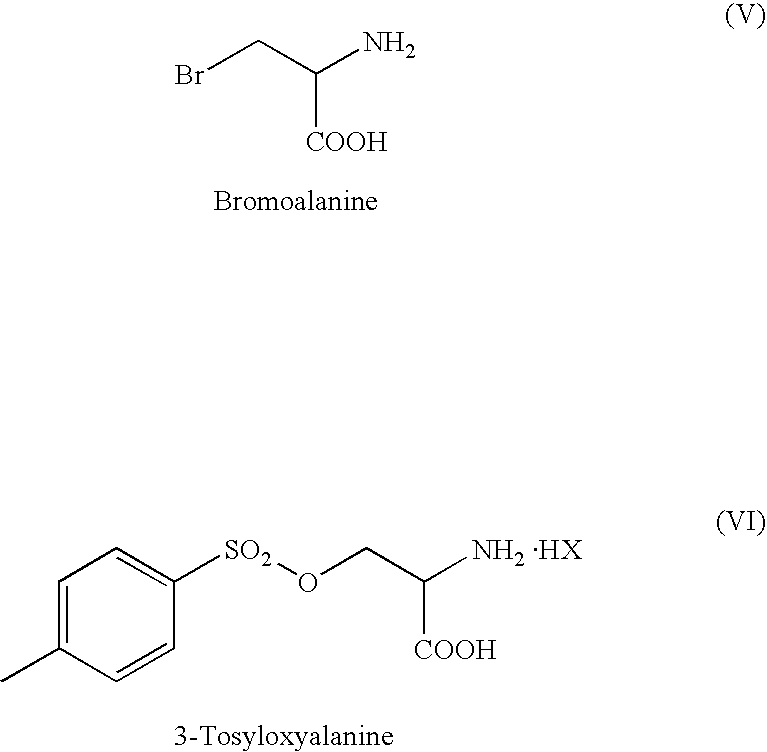Manufacturing processes for Se-methyl-L-selenocysteine
- Summary
- Abstract
- Description
- Claims
- Application Information
AI Technical Summary
Problems solved by technology
Method used
Image
Examples
example 2
L-Se-Methyl Selenocysteine from L-Chloroalanine methyl ester hydrochloride: Dimethyldiselenide (56 g) in DMF (25 ml ) was taken to get a clear solution. NaOH solution (34 g in 150 ml water) was added under stirring. The mass was cooled to 5-10.degree. C. and to this was added, portionwise, solid sodium borohydride (7 g) at <10 .degree. C. over a period of 1 hr. The reaction mixture was warmed to 40-45 .degree. C. and maintained for 2 hrs to get a clear colorless solution.
The reaction mixture was cooled to S C and L-chloroalanine methyl ester (25 g in 100 ml water) was added over a period of 30 mts. The solution was maintained at 5.degree. C. for 2 hrs and at room temperature for 4 hrs. After checking the TLC for the completion of the reaction, It was acidified with 6N HCl and concentrated. Then 6N HCl was added again and concentrated. The solid was extracted with methanol. Methanol extract was neutralized with triethylamine precipitating L-Se-methylselenocysteine. This material was ...
example 3
L-Se-methylselenocysteine from L-chloroalanine hydrochloride (using hypophosphorous acid to reduce dimethyldiselenide to methane selenol): In a reaction flask equipped with a stirrer and condenser dimethylformamide (25 ml) and dimethyldiselenide (55 g) were taken under an atmosphere of nitrogen. To this solution was added slowly hypophosphorous acid (32% solution, 73 g) over a period of 30 mts. The reaction mixture was slowly heated to 70.degree. C. and maintained for 2 hrs. The reaction mixture was cooled to 10.degree. C. and sodium hydroxide solution (20 g in 100 ml water) was added slowly. The mixture was stirred for another 30 mts at that temperature and L-chloroalanine hydrochloride (25 g in 100 ml water) was added over a period of 1 hr. The reaction mixture was stirred for another 1 hr RT and 1 hr at 40.degree. C. After TLC indicated completion of the reaction, the reaction mixture was worked up as in Example 4. Yield: 10 g.
example 4
DL-Se-Methyl Selenocysteine
PUM
| Property | Measurement | Unit |
|---|---|---|
| Angle | aaaaa | aaaaa |
| Angle | aaaaa | aaaaa |
| Temperature | aaaaa | aaaaa |
Abstract
Description
Claims
Application Information
 Login to View More
Login to View More - R&D
- Intellectual Property
- Life Sciences
- Materials
- Tech Scout
- Unparalleled Data Quality
- Higher Quality Content
- 60% Fewer Hallucinations
Browse by: Latest US Patents, China's latest patents, Technical Efficacy Thesaurus, Application Domain, Technology Topic, Popular Technical Reports.
© 2025 PatSnap. All rights reserved.Legal|Privacy policy|Modern Slavery Act Transparency Statement|Sitemap|About US| Contact US: help@patsnap.com



